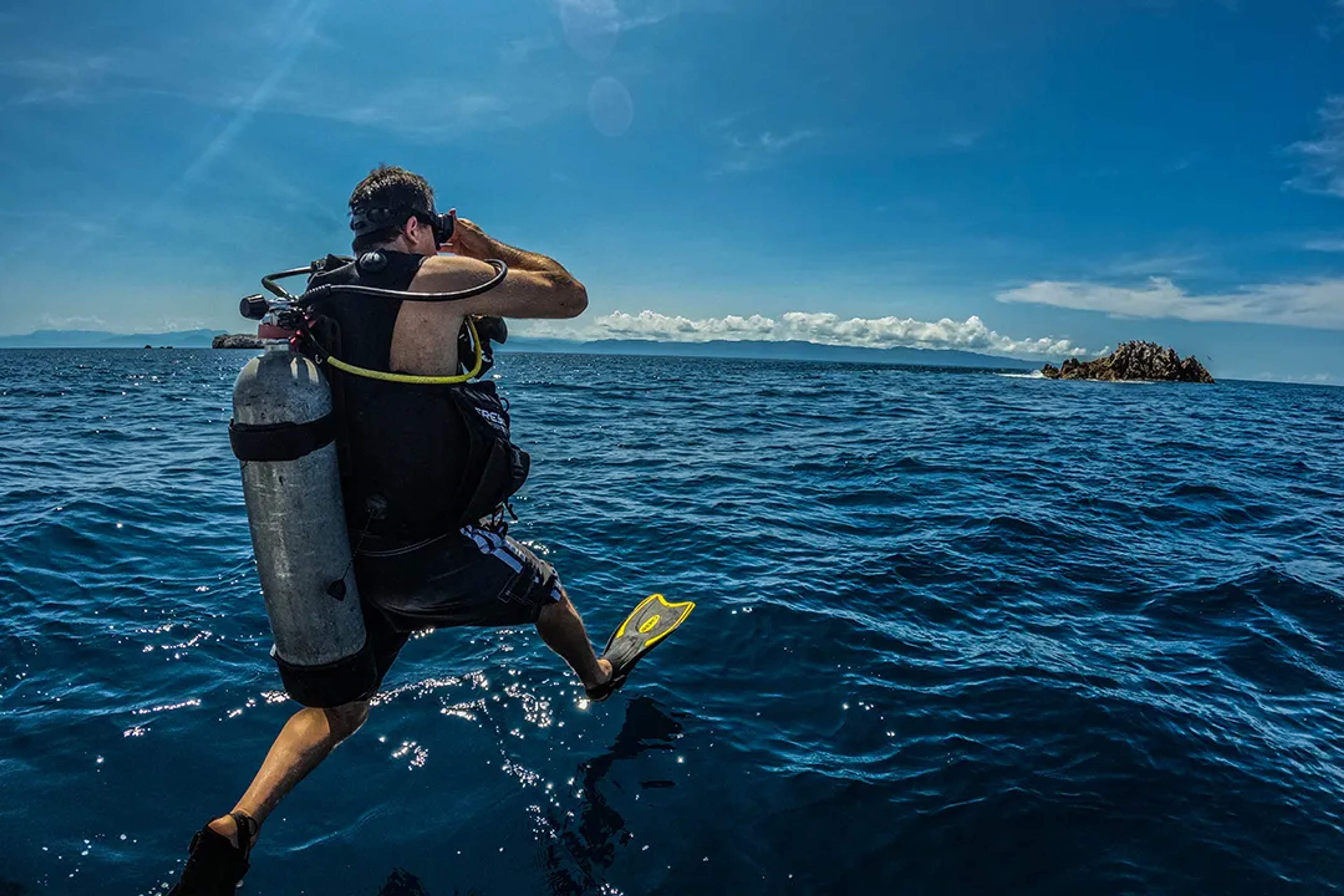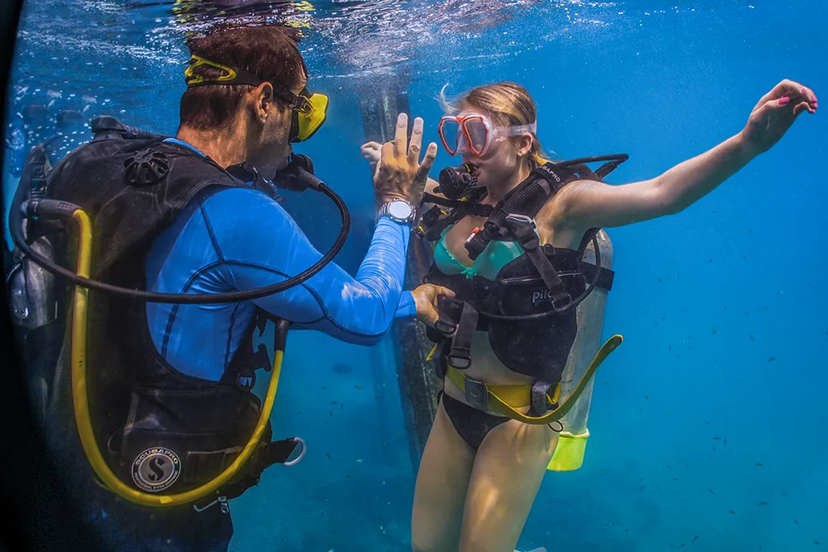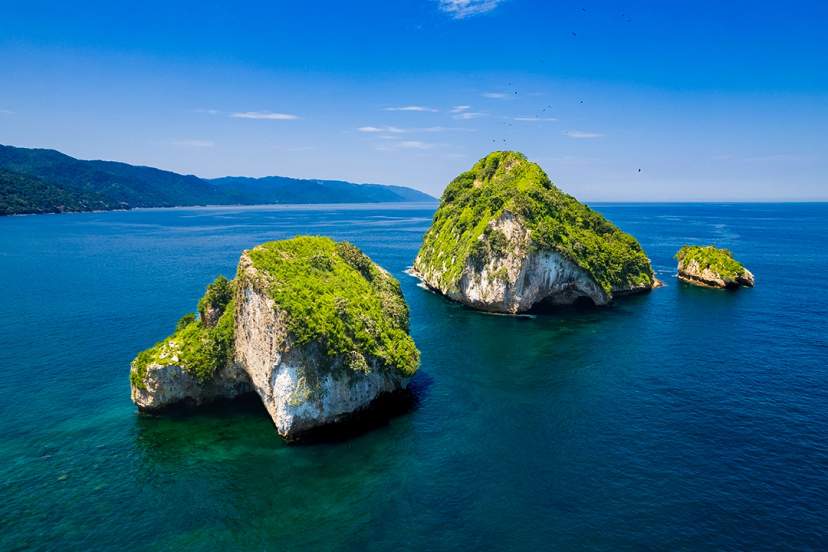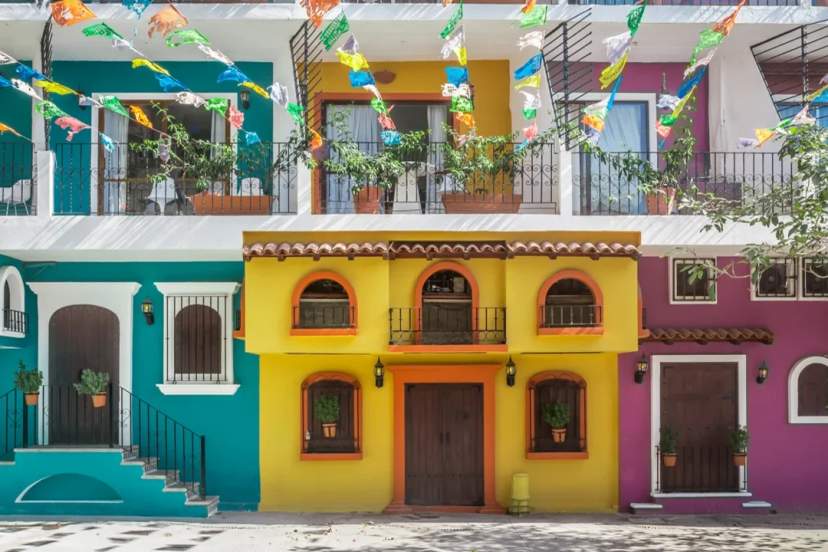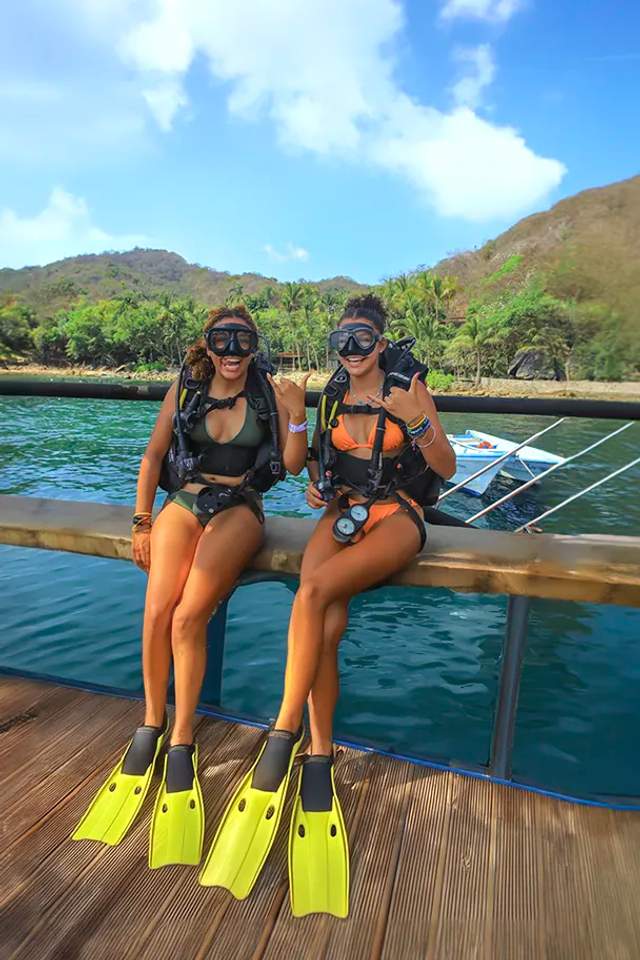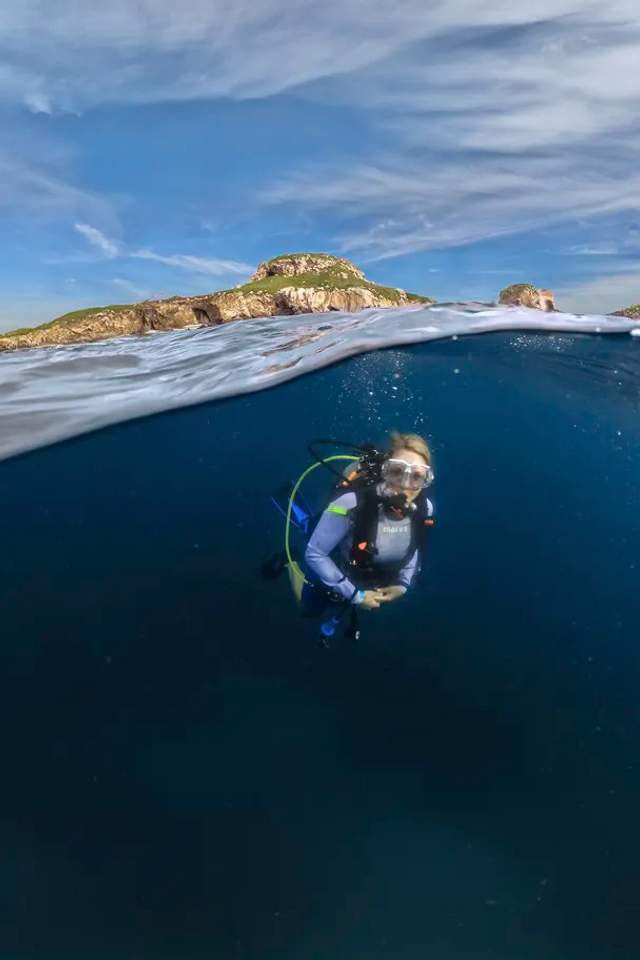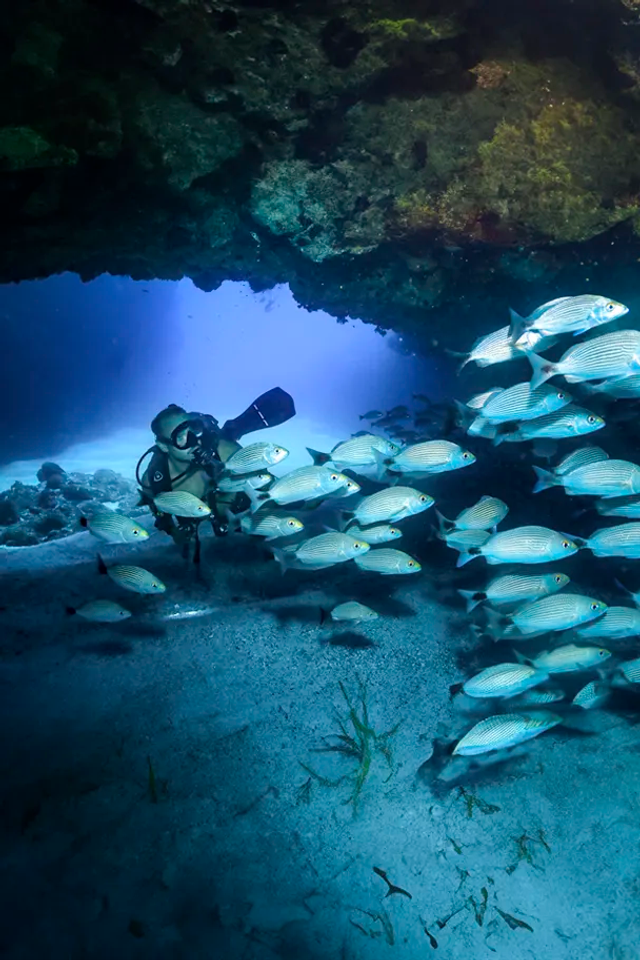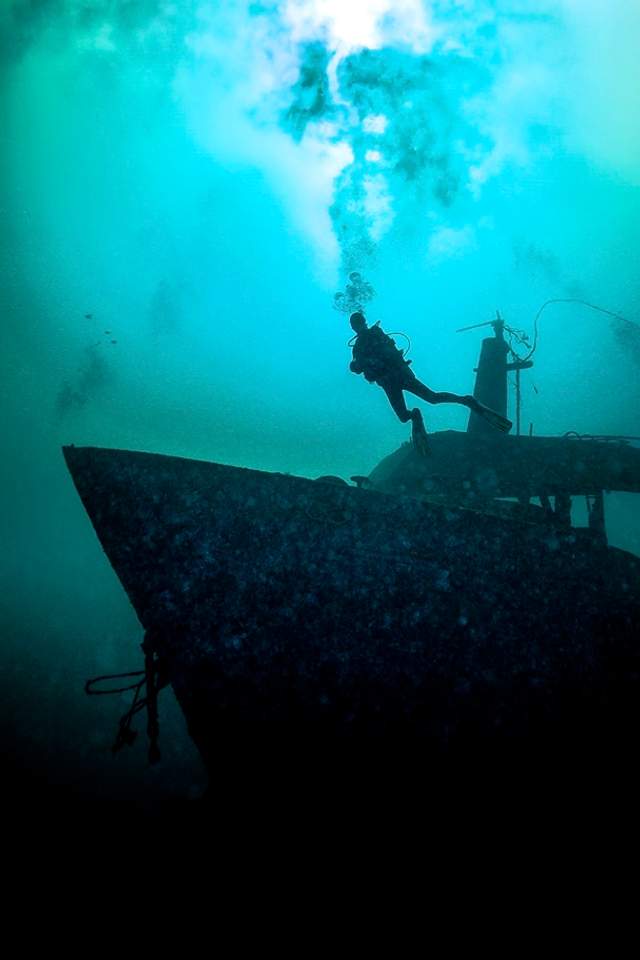Mexico sits between two incredible bodies of water—the Pacific and the Caribbean—plus the Gulf of Mexico, creating underwater crossroads you won't find anywhere else. The Sea of Cortez earns its title as the "aquarium of the world" with thriving reefs and open-ocean encounters that impressed Jacques Cousteau, while currents sweep along Cozumel's stretch of the Mesoamerican Barrier Reef, setting up effortless drift dives through coral-covered walls.
We're talking serious biodiversity here. Cabo Pulmo's UNESCO-listed reef shelters over 800 fish species, while volcanic islands, wrecks, and freshwater cenotes add completely different ecosystems to explore. Warm Caribbean shallows, Pacific seamounts rich with pelagics, and crystal-clear caverns stay diveable at different times throughout the year.
We'll break down the best spots, the certification you need for each, and the seasons that turn great dives into the ones you'll never forget.
Land's End & The Arch – Cabo San Lucas
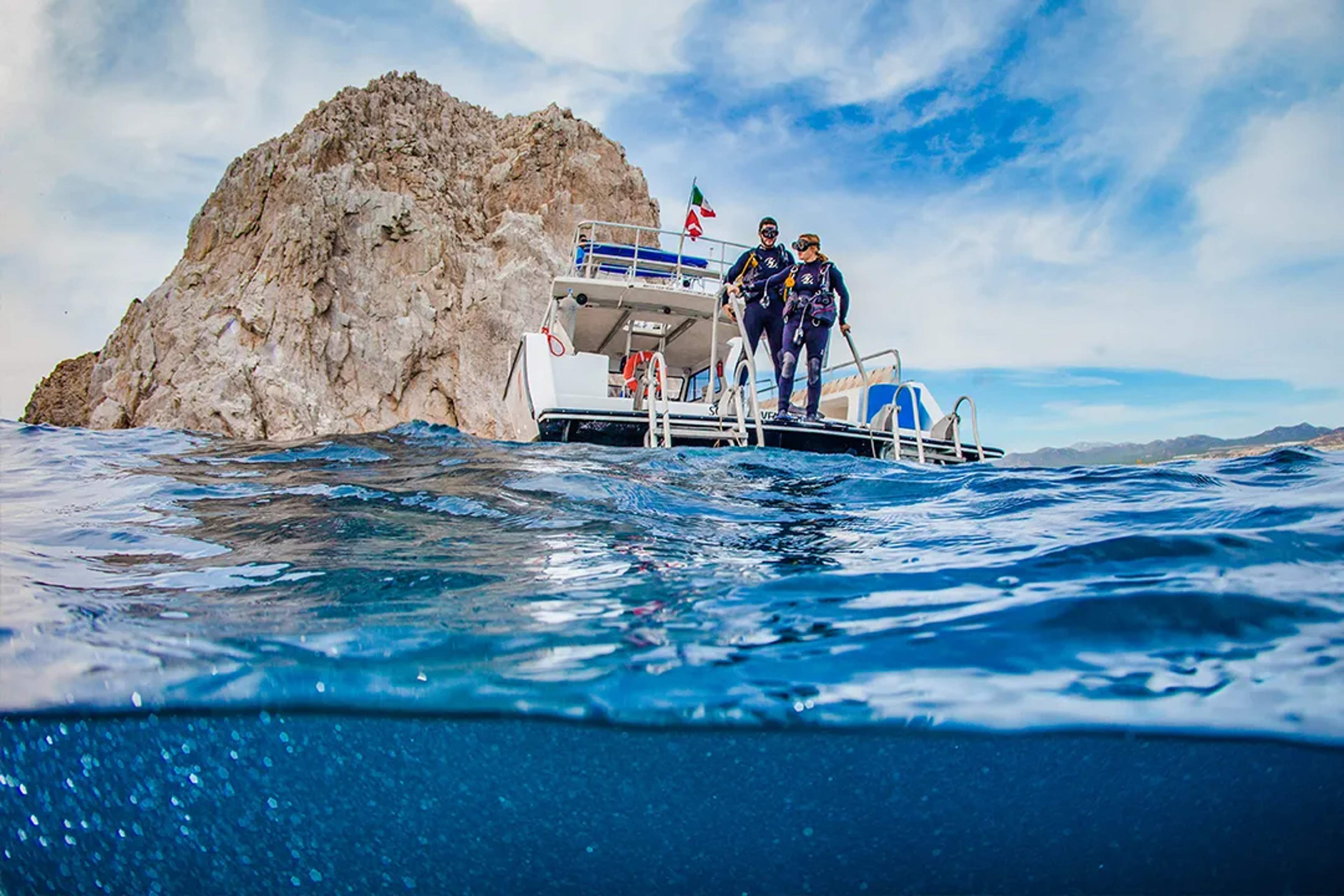
When you dive at Land's End in Cabo San Lucas, you're exploring the tip of the Baja Peninsula, where iconic granite pinnacles rise dramatically from the ocean floor. This site combines fascinating geological formations with a thriving marine ecosystem that includes a vibrant sea lion colony, often joining divers for playful encounters.
Visibility ranges from 60 to 100 feet with mild to moderate currents creating an exhilarating experience. The best diving window runs from October to May when calmer seas provide optimal conditions for spotting turtles, graceful mobula rays, and impressive schools of jacks.
Surface conditions can become choppy by noon, so morning dives offer the most enjoyable experience. An Open-Water certification meets the minimum requirement for this accessible yet spectacular destination.
To experience Land's End firsthand, book your dive with Cabo Adventures, where experienced guides will lead you through these mesmerizing seascapes.
Cabo Pulmo National Park – Sea of Cortez
Moving north into the Sea of Cortez, Cabo Pulmo National Park stands as an extraordinary testament to marine conservation success. This UNESCO World Heritage site protects a 20,000-year-old coral reef where iconic dive sites like El Bajo and El Barco offer encounters with massive schools of jacks forming mesmerizing "jack tornadoes" alongside giant groupers and bull sharks.
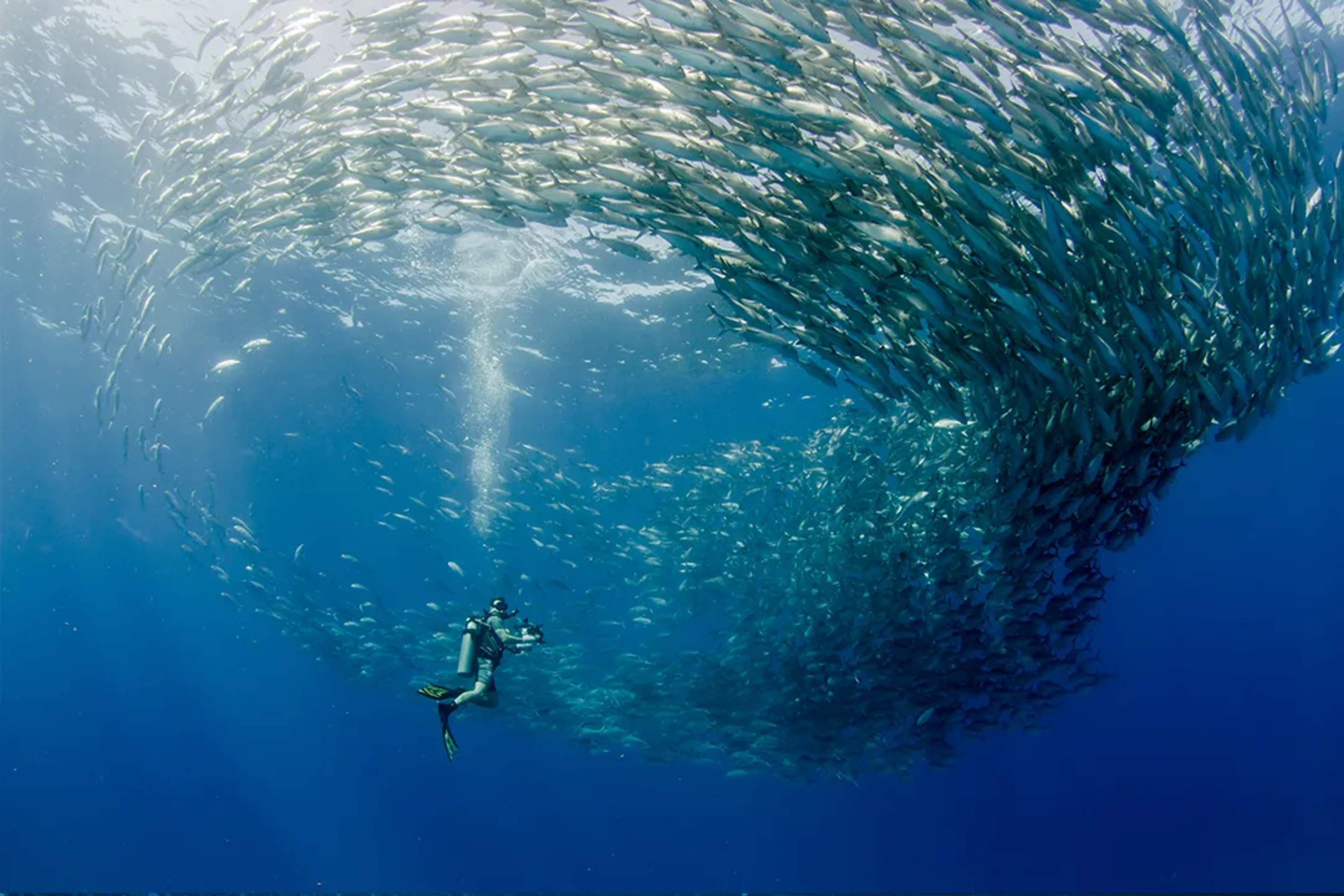
Visibility typically ranges from 40 to 80 feet with water temperatures between 70 and 85°F. October through April provides the clearest water and most active marine life. The park enforces strict conservation rules, including no gloves and no coral contact, to preserve this vibrant ecosystem.
Intermediate to advanced diving skills are recommended due to varying conditions and depths. Plan your marine sanctuary adventure with experienced guides through Cabo Pulmo Dive to ensure both safety and an informative experience.
Princesa & Nearby Wrecks – Puerto Vallarta
Off the coast of Mismaloya lies Puerto Vallarta's "shipwreck cemetery," where coral-encrusted steel structures rest at depths of 60 to 100 feet. These artificial reefs require Advanced Open-Water certification, and many divers enhance their experience with nitrox for extended bottom time during repetitive deep dives.
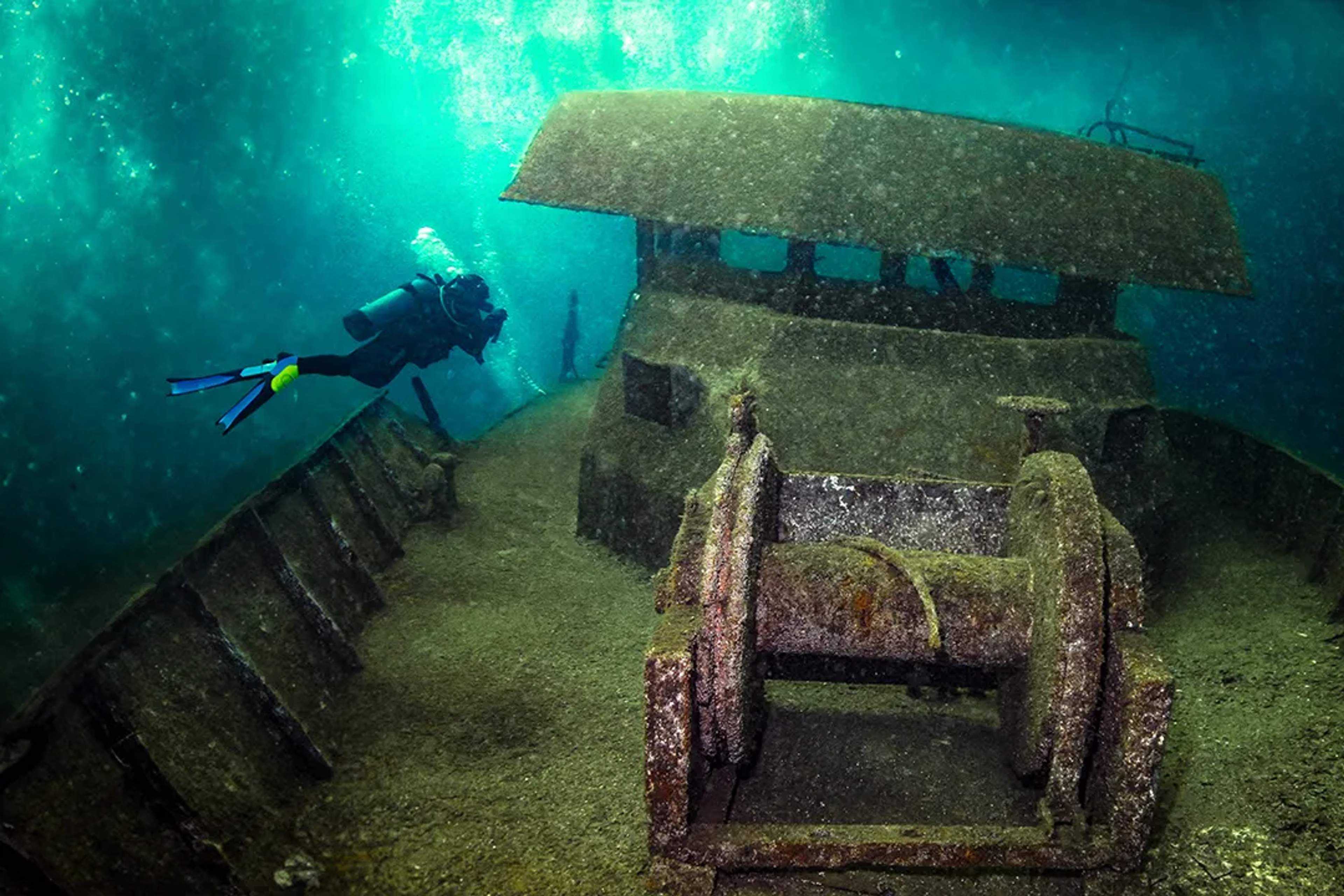
Winter brings an added bonus as humpback whale (https://www.vallarta-adventures.com/en/tour/whale-watching-adventure/) songs echo through the water from December to April. Marine residents include moray eels, playful octopuses, and schooling grunts, though swift currents and potential entanglements demand careful attention to wreck-specific safety procedures.
Experience Puerto Vallarta's underwater history in a Private Princesa Shipwreck Dive.
El Morro Seamount – Puerto Vallarta
El Morro Seamount features striking offshore pinnacles plummeting to 120 feet, shaped by volcanic activity into intriguing swim-throughs adorned with stunning black coral formations. This site attracts giant Pacific mantas, reef sharks, and seasonal pelagic species, making it a magnet for experienced marine life enthusiasts.
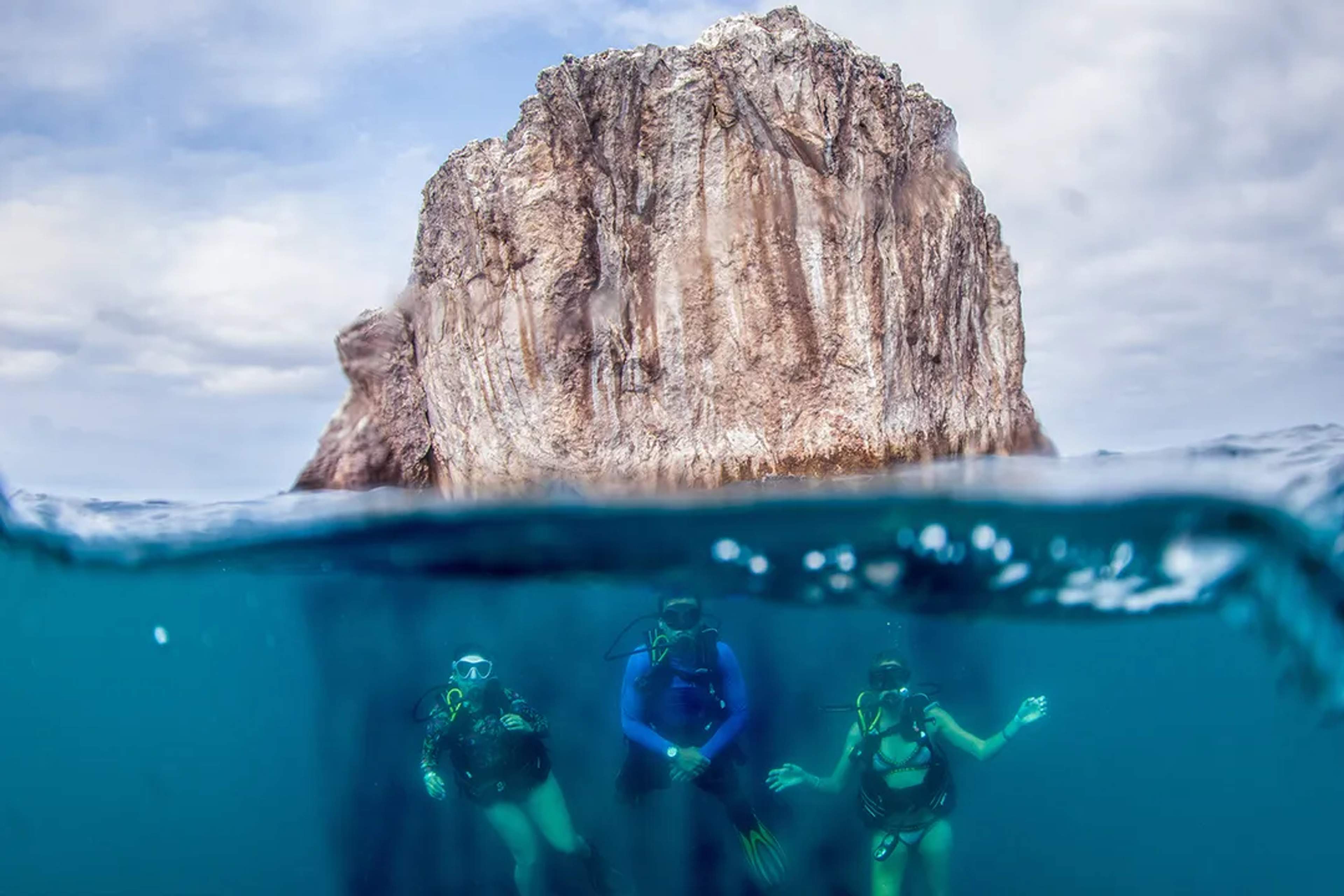
Divers need at least 25 logged dives and an Advanced Open Water certification due to strong currents. A Delayed Surface Marker Buoy (DSMB) is recommended for safety. The site's reputation for big pelagic encounters in Banderas Bay makes it worth the requirements.
Las Caletas – Beginner Cove
For those just starting their underwater journey, Las Caletas provides a sheltered sandy cove perfect for Discover Scuba experiences and open-water certification checkout dives. With a maximum depth of 40 feet and year-round calm conditions, it adheres to PADI depth limits while offering encounters with damselfish, pufferfish, and rays gliding along sandy flats.
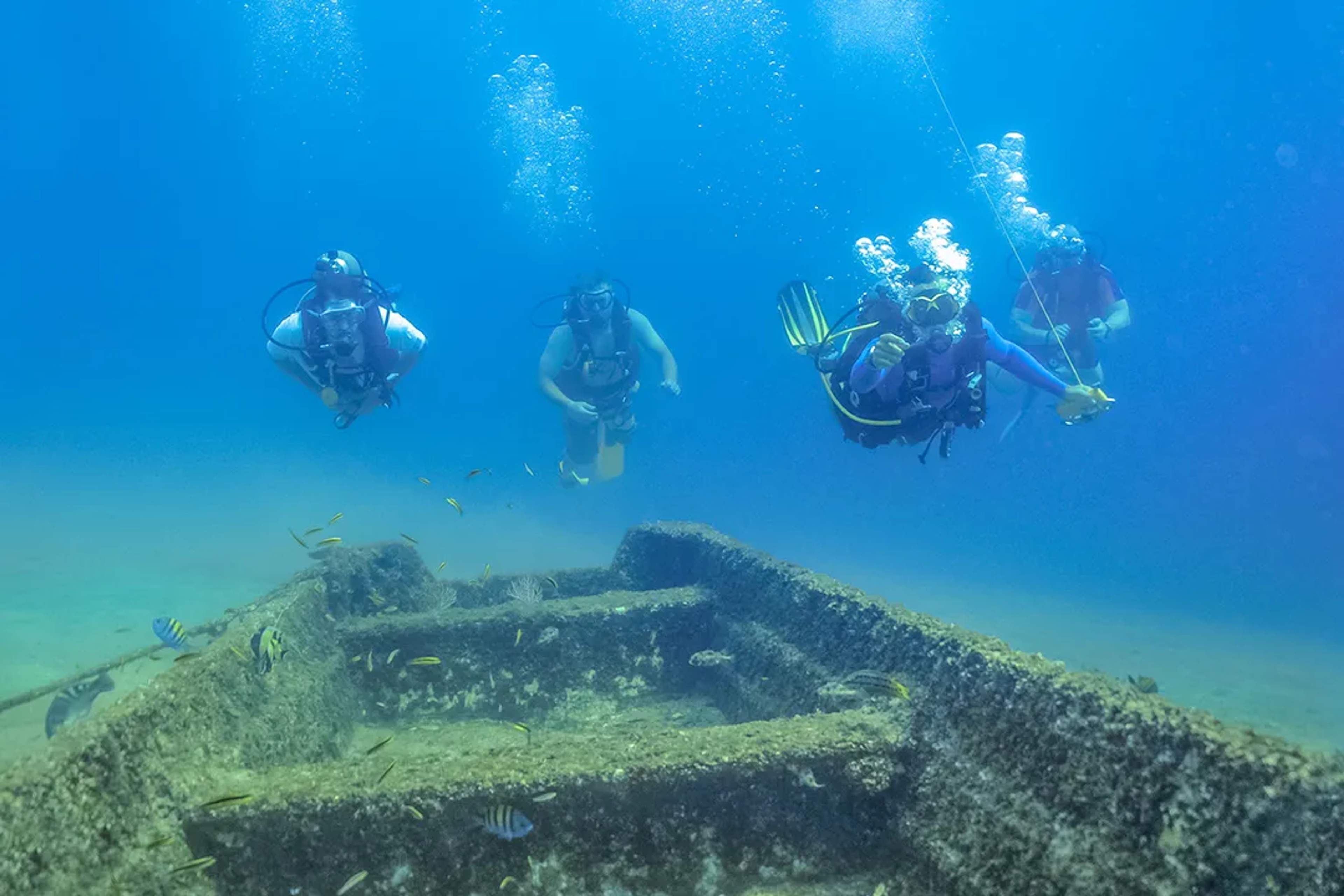
Surface intervals include beachside dining and family-friendly activities, making it a complete day experience. New divers should focus on staying close to instructors, monitoring buoyancy, and enjoying the guided experience. Begin your diving journey with a Las Caletas Scuba lesson.
Los Arcos Marine Park
This federally protected marine sanctuary showcases iconic granite arches, tunnels, and walls plunging 1,800 feet into the depths. Home to over 300 marine species, including graceful eagle rays, green turtles, and elusive octopuses, Los Arcos offers exceptional biodiversity in a dramatic geological setting.
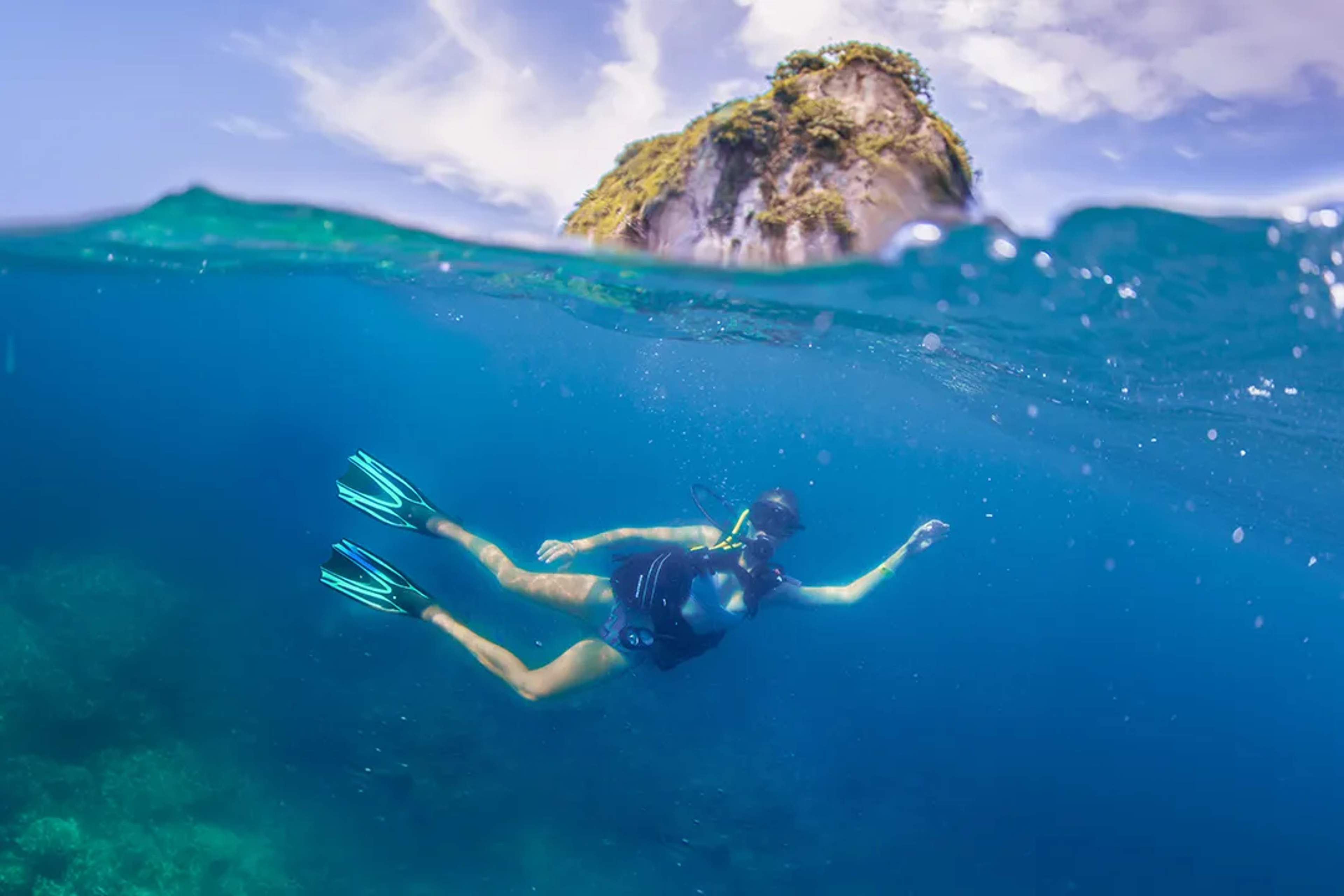
December through May provides the clearest underwater visibility as plankton blooms diminish. Divers must follow strict park regulations to preserve the delicate ecosystem while navigating the challenging tunnel and wall topography. Secure your underwater adventure for an up-close and personal look at ocean life.
Marietas Islands
These volcanic islands create an underwater paradise with caves and reefs spanning depths from 30 to 70 feet. Gentle currents make the site accessible to Open-Water certified divers, while the protected status ensures pristine conditions for encounters with tropical fish, graceful rays, and migrating humpback whales from December through March.
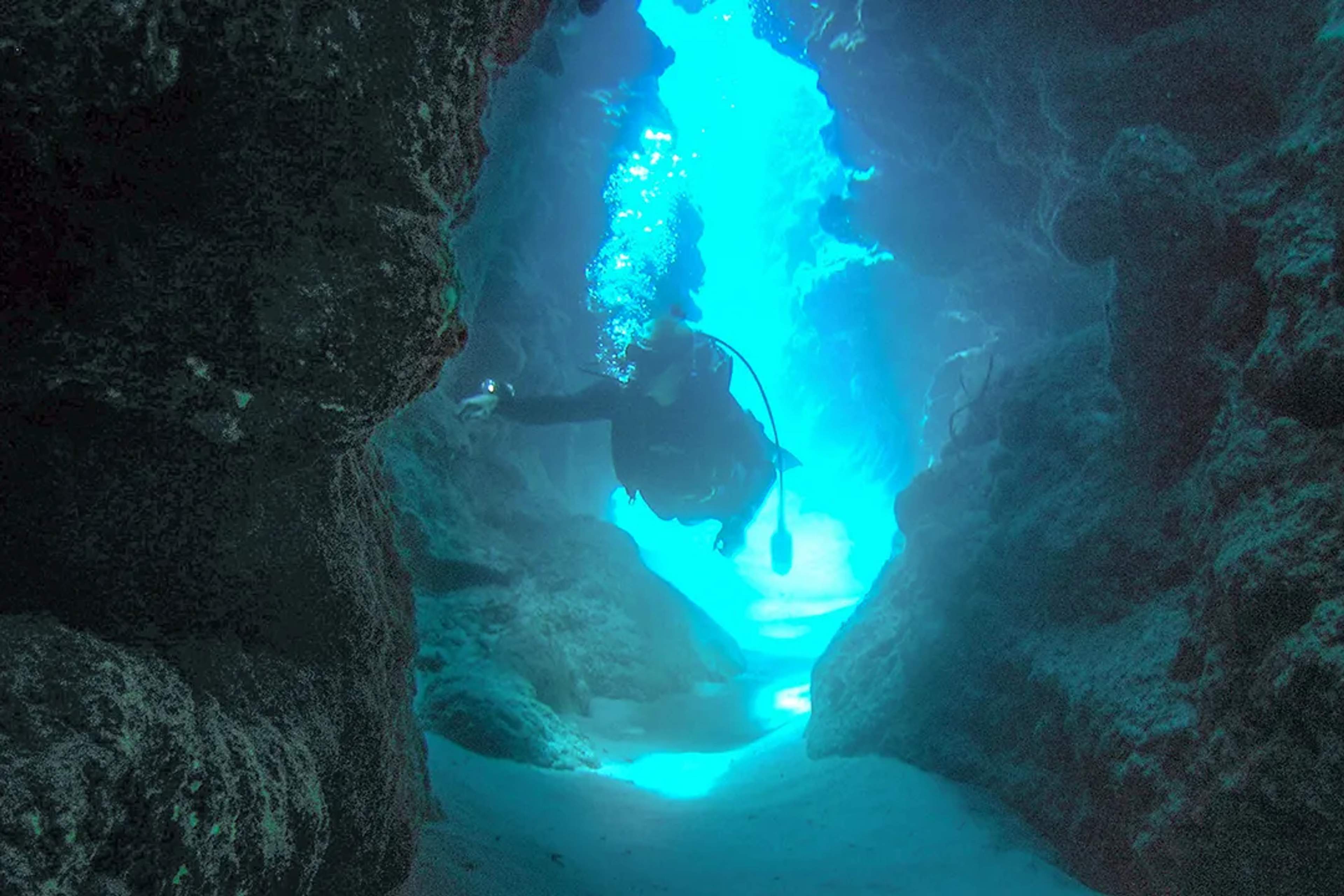
Eco-friendly diving practices are essential, maintaining respectful distances from coral and marine life to preserve this sanctuary for future generations.
Plan your visit during optimal visibility and migration periods to make the most out of your Marietas scuba diving experience.
Los Anegados Seamount
Located between the Marietas Islands and El Morro, this hidden gem challenges advanced divers with vibrant black coral-draped caves and strong currents at depths of 50 to 100 feet. The dynamic underwater landscape requires advanced certification, and reef hooks to navigate safely.
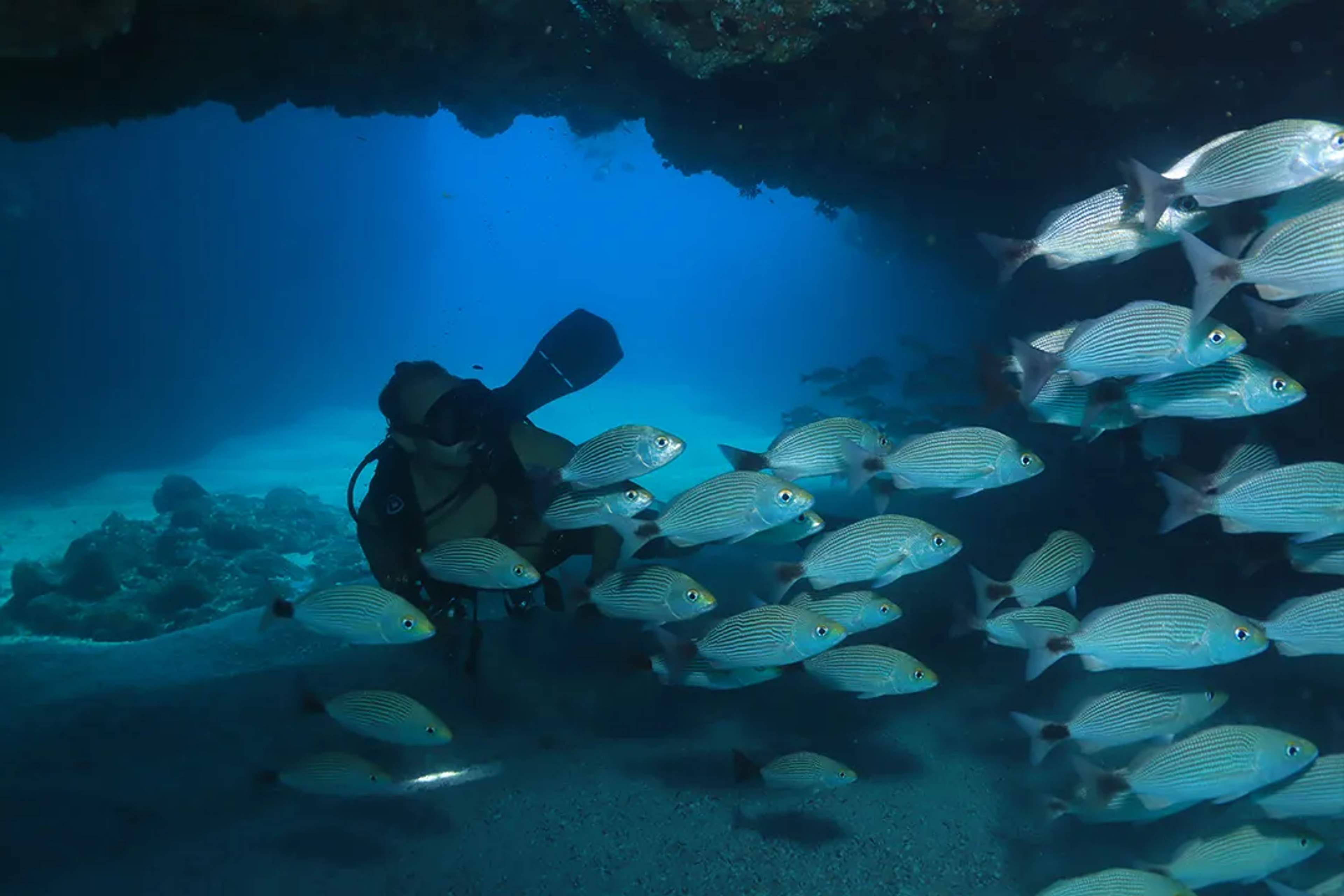
Winter's dry season offers the best conditions with calmer seas and clearer visibility. Current awareness and proper equipment use are paramount for safe exploration of this thrilling site.
Book your adventure for a more challenging diving experience.
Chimo – "The Cathedrals"
This remote site earns its nickname from towering pinnacles and breathtaking cathedral-like arches that create an otherworldly diving experience. Coral gardens begin at 30 feet and drop to an impressive 130 feet, supporting encounters with giant mantas and schools of pelagic fish among the vibrant coral formations.
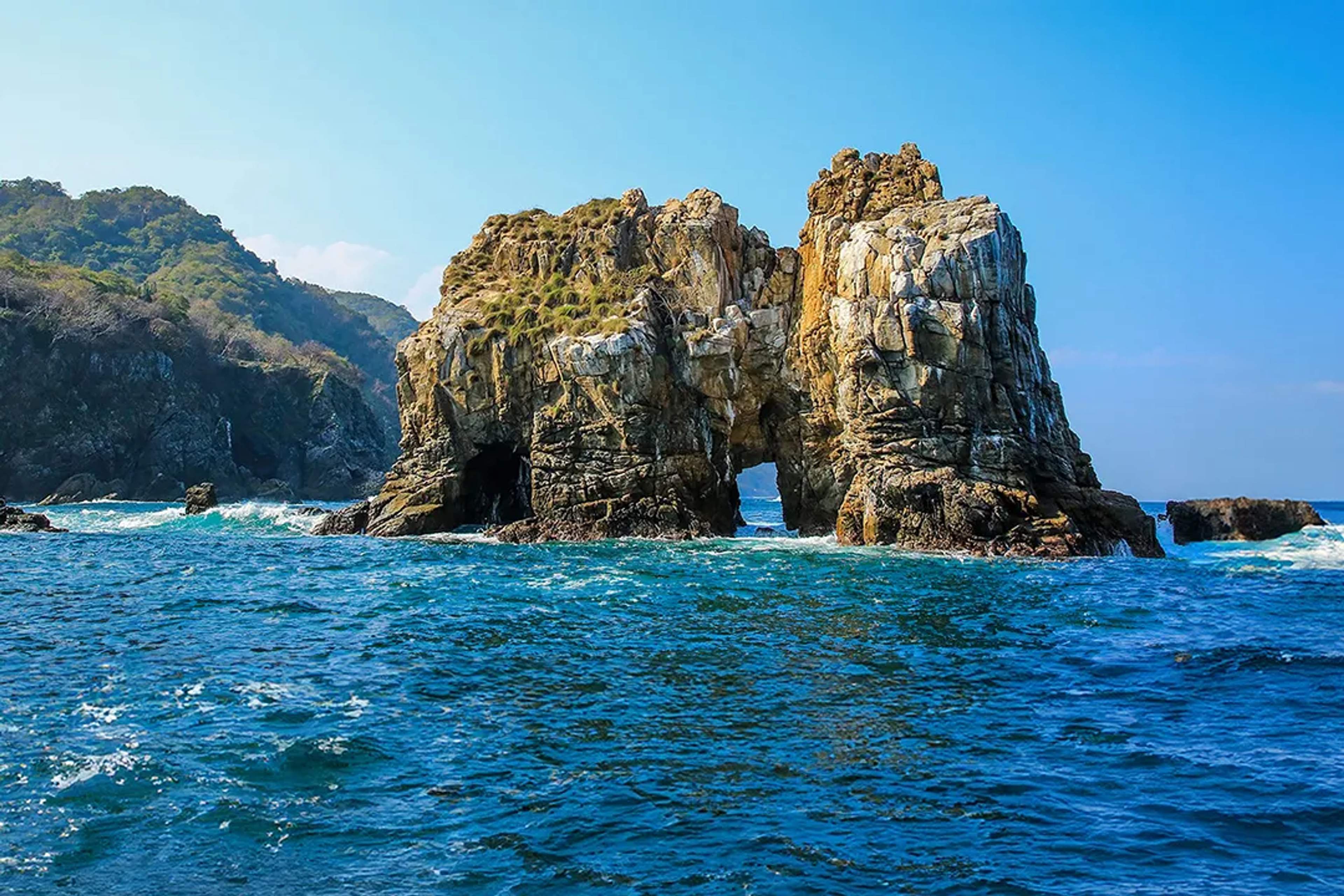
Accessible only via full-day charter, Chimo requires advanced planning and careful attention to safety stops. Nitrox certification extends bottom time for prolonged manta encounters. November through May offers peak visibility for witnessing the underwater cathedral's full splendor. For a seamless and worry-free day, join our tour and let us handle the details.
La Corbetena & El Sequial – Offshore Vallarta
Twenty-two miles offshore, these dramatic volcanic formations feature impressive caverns and drop-offs spanning 60 to 130 feet. Ripping currents demand Advanced Open Water certification plus recent deep diving experience, making these sites suitable for seasoned divers seeking encounters with sailfish, sharks, and occasional whale sharks.
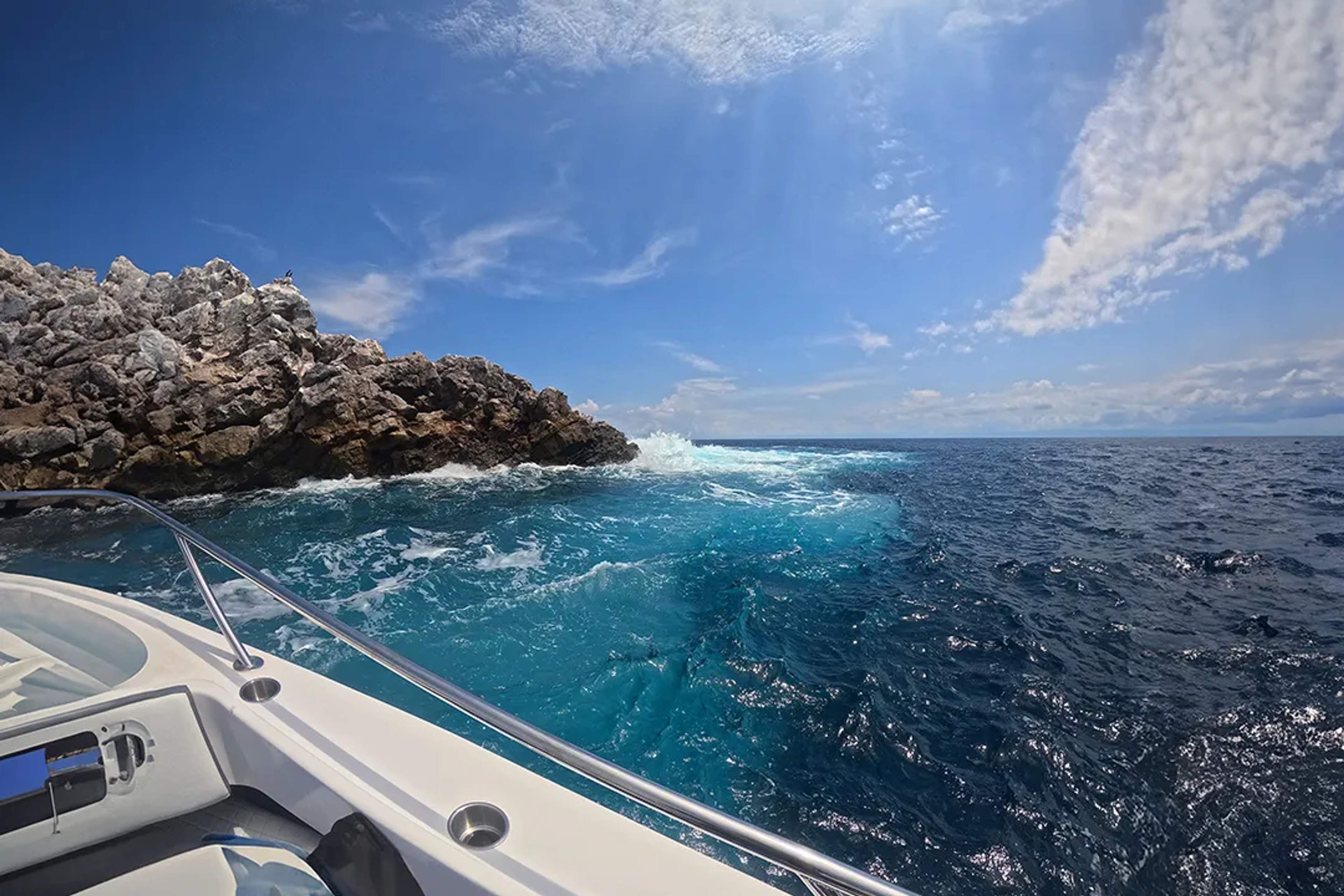
Safety equipment, including audible alerts and DSMBs, is crucial, often requiring negative entries due to challenging conditions. Summer months provide calmer seas and optimal pelagic encounters. For advanced divers, this experience is one you don’t want to miss.
Night Drift Diving – Cozumel
Transitioning to Mexico's Caribbean coast, Cozumel offers exceptional night drift diving along famous reefs where currents carry you through coral formations after dark. The island's exceptional water clarity reaches 30 meters, perfect for spotting nocturnal marine life while every movement sparks bioluminescent displays.
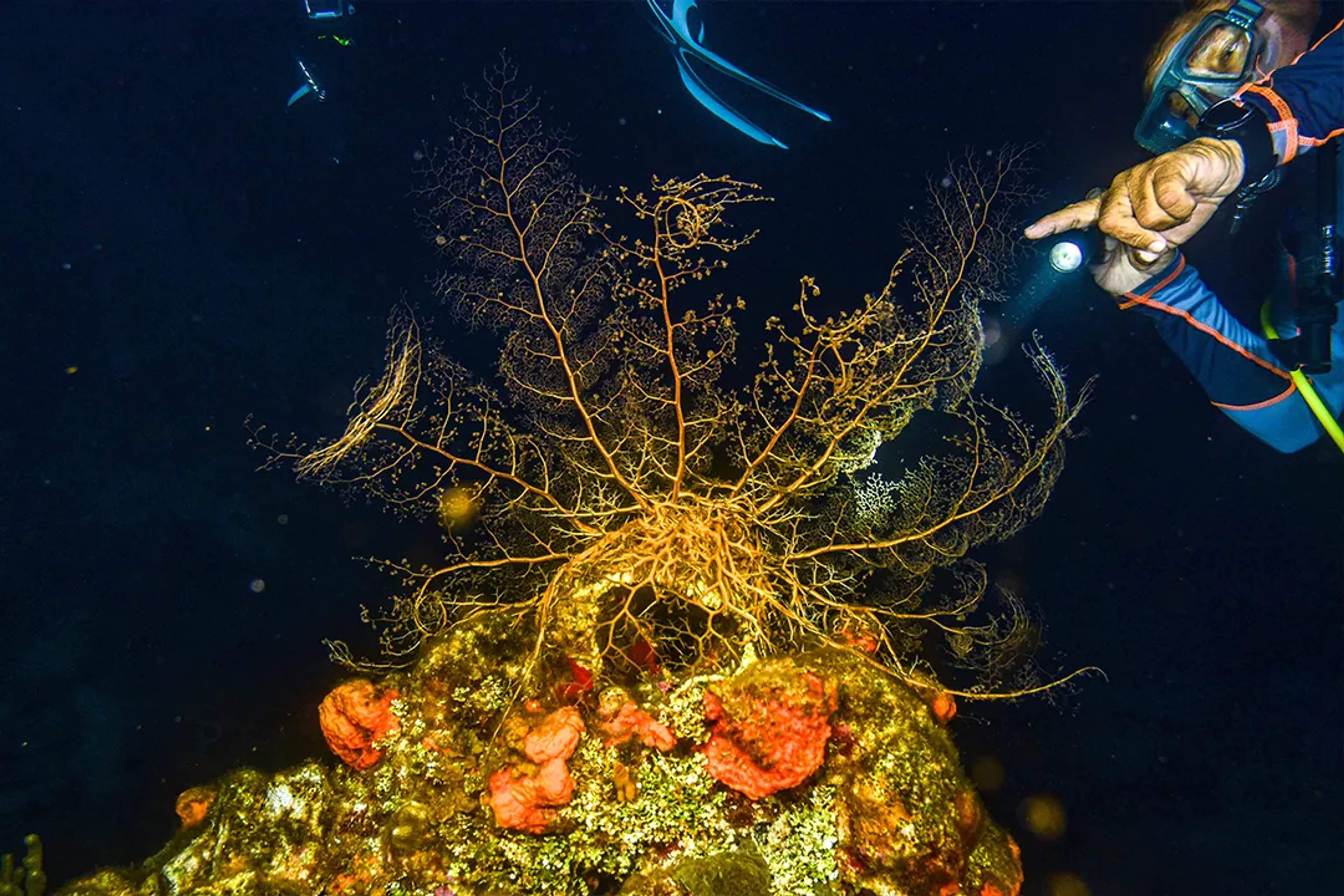
Hunting octopuses emerge from daytime hiding spots as water temperatures remain comfortable at 78–84°F year-round. April through September provide the calmest, clearest conditions when plankton counts are lower.
Santa Rosa Wall – Cozumel
Drop over the lip at 50 feet, and the limestone cliff disappears into cobalt blue depths. Drift along the wall watching purple sponges and sea fans dance in gentle currents while eagle rays glide by at eye level. Green turtles battle the flow as Caribbean reef sharks patrol deep shadows, demonstrating why Cozumel earns its reputation as Mexico's premier destination.
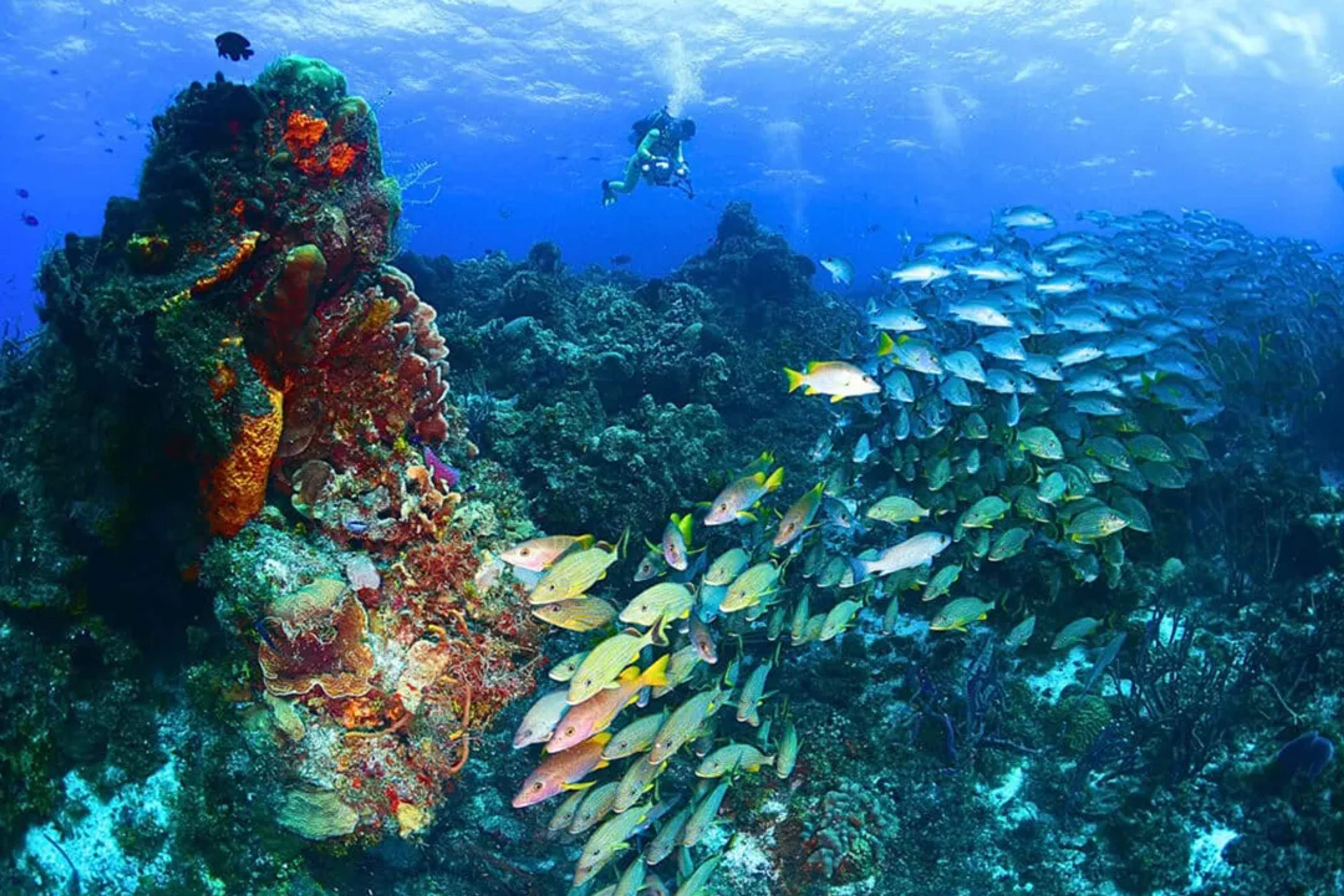
Photo by: dresseldivers.com
Visibility often exceeds 30 meters, yet strict buoyancy control remains crucial since one fin kick can send you soaring into the blue. April through September offer the calmest seas and most predictable currents.
Dos Ojos Cenote – Riviera Maya
Moving inland to the Yucatan Peninsula, cenote diving offers an entirely different underwater world. Dos Ojos reveals twin underwater caves draped in stalactites with sunlight slicing through blue chambers like stage lights.
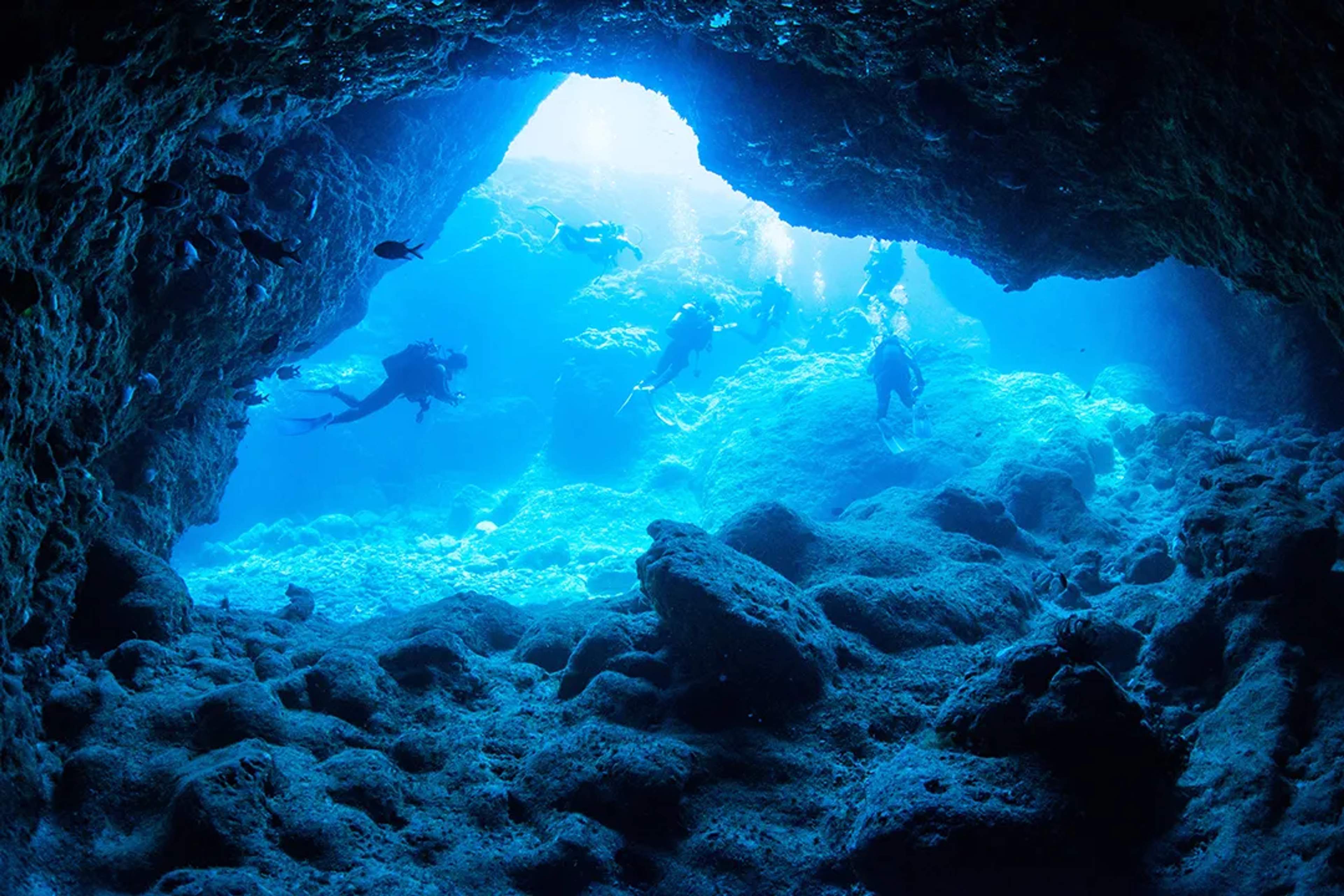
The freshwater maintains a steady 77°F year-round with no current, allowing motionless hovering between limestone columns.
C-56 Juan Escutia Wreck – Puerto Morelos
Back on the coast, this 1940s Mexican Navy minesweeper sits perfectly upright at 90 feet with guns now draped in pink soft coral while barracuda and spadefish circle overhead. Consistent visibility of 60 to 100 feet showcases the intact bridge and swim-through passages.
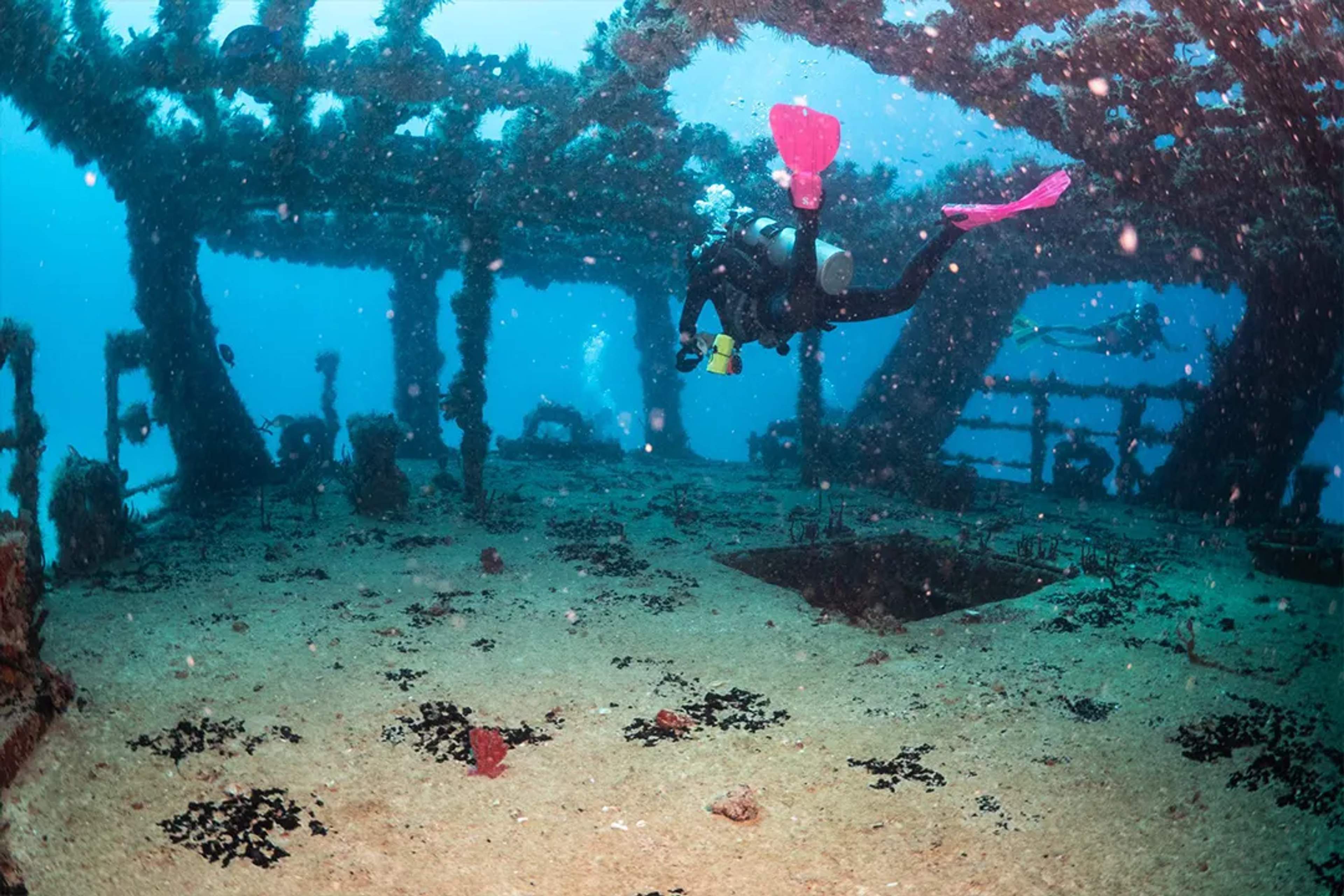
Photo by: southeastdivers.com
Advanced certification is required for this depth, with the Wreck Diver specialty strongly recommended for interior exploration. Winter's calm months from December through April deliver the Caribbean's clearest conditions.
Mahahual & Banco Chinchorro – Costa Maya
Southern Quintana Roo provides uncrowded diving at sites like Los 40 Cañones and El Faro Viejo, where gentle currents and 18-meter depths create perfect conditions for newer divers to build confidence among bright reef fish.
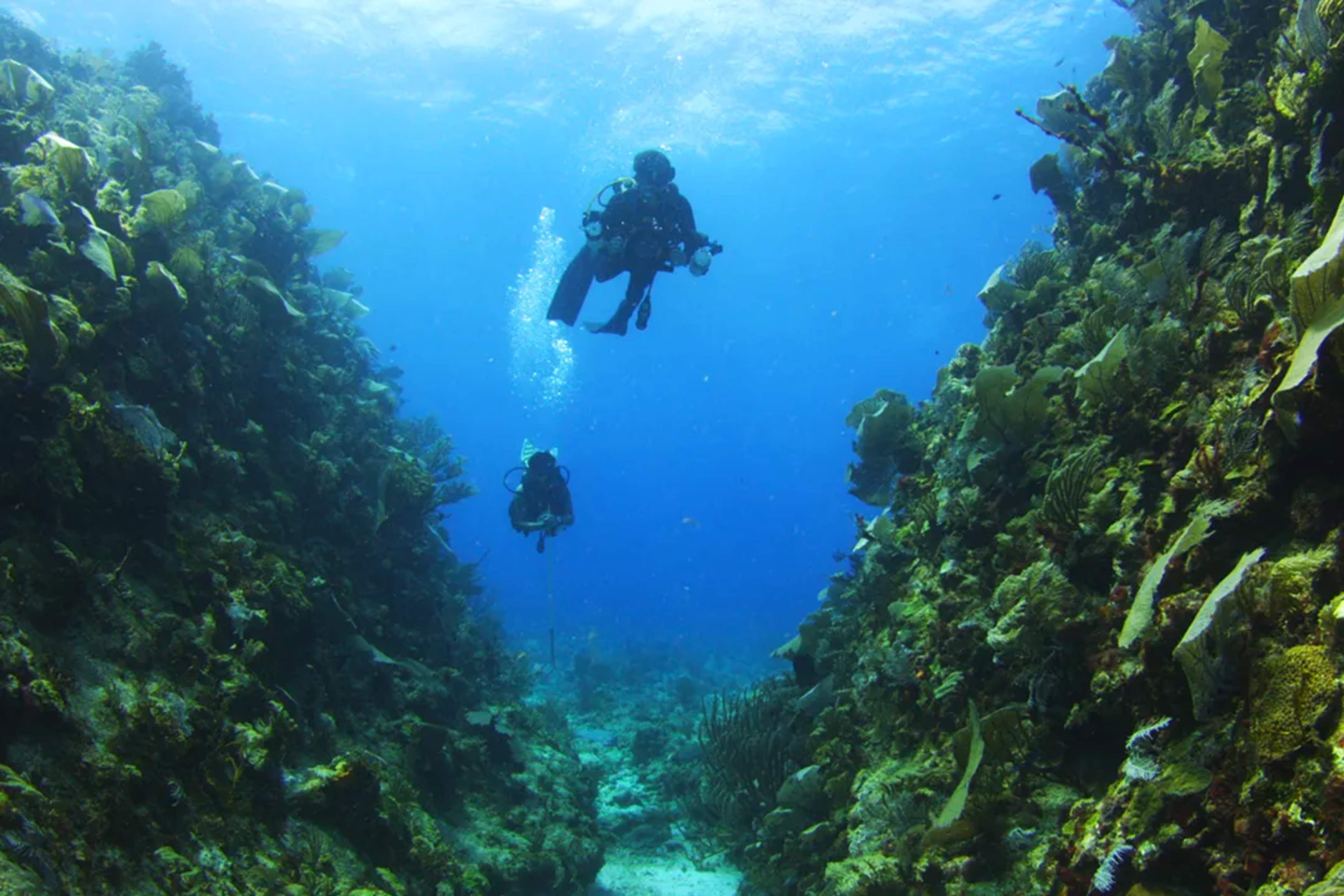
Photo by: gob.mx
Thirty kilometers offshore, Banco Chinchorro forms the Northern Hemisphere's largest atoll with dramatic drop-offs attracting bull sharks while pristine shallows shelter eagle rays, turtles, and American crocodiles inhabiting mangrove lagoons. Advanced certification and confident buoyancy skills are required due to strong currents and depths exceeding 30 meters.
Two-hour crossings from Mahahual begin at first light with limited permits protecting this biosphere reserve, requiring advance booking. Winter's dry season from December through April delivers the flattest seas and clearest water for this offshore adventure.
Which Dive Site Do You Want to Explore?
Mexico's diverse underwater landscapes demand matching your skills with the season and site. Cabo Pulmo's calm conditions from October through April contrast with Socorro's humpback season from January to April, while cenotes maintain perfect 77°F temperatures year-round when ocean conditions turn rough.
Practicing responsible diving techniques, like maintaining proper buoyancy and observing marine life without touching, helps protect these fragile ecosystems. By respecting these underwater treasures, you ensure Mexico's remarkable reefs remain vibrant for generations of future divers to enjoy.
Between dives, discover the rich cultural tapestry that makes Mexico special. Wander through charming coastal towns, sample authentic regional cuisine, or explore local art galleries showcasing Mexican creativity. The cultural experiences complement your underwater adventures perfectly.
Book your dives with Vallarta Adventures today and become part of Mexico's incredible underwater story.
